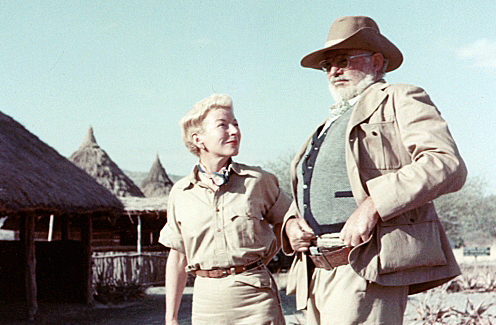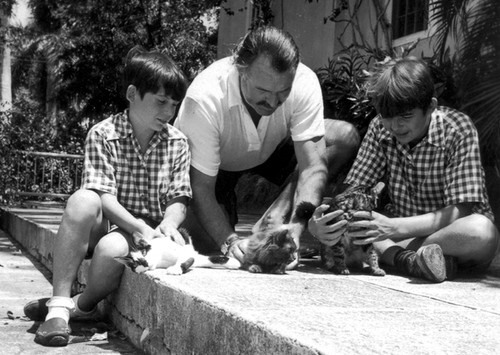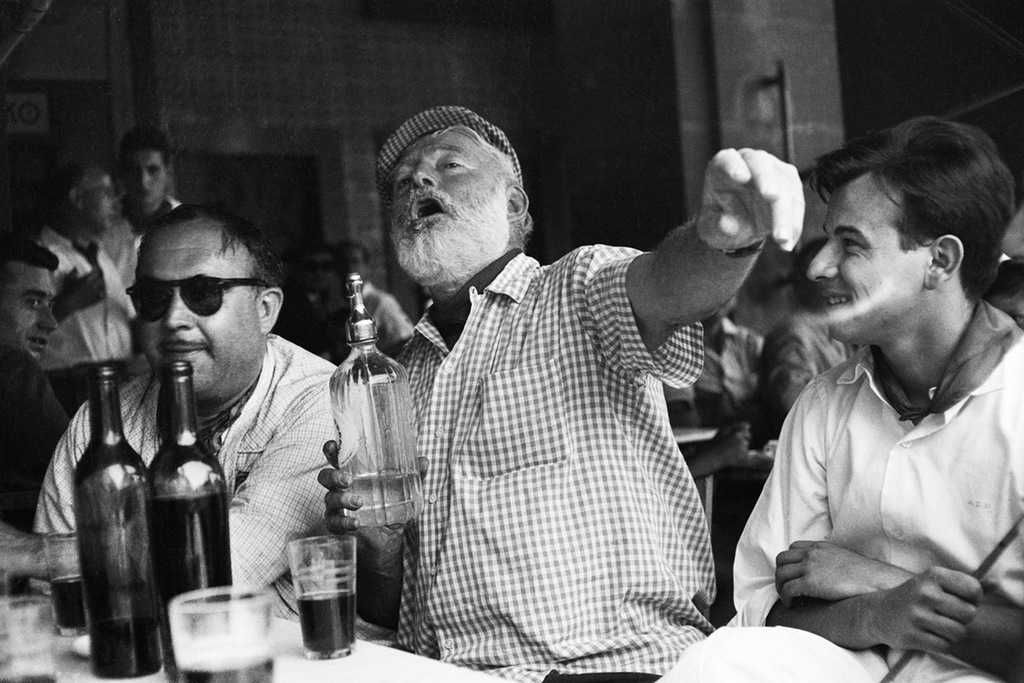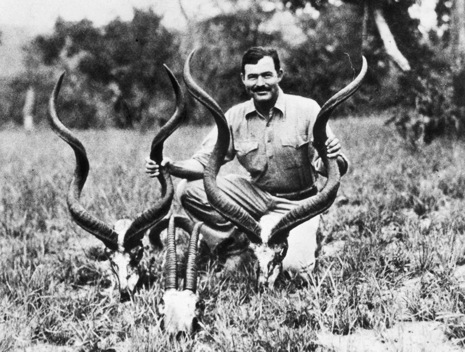Yesterday we left off with Hemingway marrying his third wife Martha Gellhorn on November 20th, 1940. Once Ernest and Martha were married, they moved into a Summer home in Ketchum, Idaho while they spent their Winters in Cuba. In October 1940 what is now considered Hemingway’s most famous novel, For Whom the Bell Tolls, was published. This novel was dedicated to Hemingway’s new wife and he has said that she was the primary inspiration for him to write this novel. The novel was nominated for a Pulitzer Prize and sold half a million copies with the first few months. If A Farewell to Arms established Hemingway as an author, For Whom the Bell Tolls skyrocketed his career and he became a household name.
Let’s fast forward a few years to May 1944 where Hemingway was spending a majority of his time in London. While spending time with Mary Welsh, a correspondent for Time Magazine, Hemingway fell in love with Welsh. A few months later Hemingway and Martha were divorced and Ernest proposed to Mary Welsh.

Hemingway and Welsh. Photo: Bring Me the News
During the Normandy Landings, it’s been said that Hemingway was present for this event, but according to historians Hemingway was not allowed ashore. That same year Hemingway became a leader of a small militia in the village outside of Paris called Rambouillet. His exploits don’t stop there though, in August that same year he was in Paris at the time of it’s liberation. Many rumors have circled around him being the first into the city and the person to liberate the Ritz, but this is actually not true. It was all apart of the legend that circles around Ernest Hemingway. On this day, Hemingway supposedly attended Sylvia Beach with his new wife and long time friend Pablo Picasso, where he also forgave Gertrude Stein over a feud they had been fueling over the past year. Hemingway was however present at the Battle of Hürtgen, where he fought and became extremely ill, Ernest had been diagnosed with pneumonia. Ernest Hemingway was awarded once again for his bravery during the war. In 1947, Hemingway received a Bronze Star for his courage and bravery fighting in World War 2.

Hemingway with two of his sons. Photo: Hemingway Preservation Foundation
After the war ended Hemingway resumed his life as best as he could, he and Mary were married right after the war in 1946. However, many injuries and accidents occurred in the following years causing many health problems in the future. Ernest was in a car accident in 1945 wounding his knee and forehead. In various skiing accidents, Mary broke both of her ankles. Hemingway’s second son was also in a car accident in 1947 causing him to suffer from a very serious head injury. Bad luck seemed to follow the Hemingway family as soon as they tried to return to their normal lives. Many of Hemingway’s literary companions began to pass away in the following years. F. Scott Fitzgerald in 1940, Ford Madox Ford in 1939, Gertrude Stein in 1946, and these are just a few in a long list of companions to pass away in ten short years. These deaths did a number on Hemingway, causing him to suffer severely from depression. In addition to his deep depression he also suffered from headaches, weight gain, high blood pressure, and even diabetes.

Photo: Reddit
Despite his spiraling decline into alcoholism and other various health issues, Hemingway continued to write. In 1946 he worked on a project titled The Garden of Eden and another one title The Sea Book, but both projects were put on hold because of his health issues. A few years later Hemingway moved to Venice where he once again fell in love with another woman, this time a 19 year old girl named Adriana Ivancich. This love inspired Hemingway to write his novel Across the River and Into the Trees which was published in 1950. The novel wasn’t received well and in his fury Hemingway began working on a new novel titled The Old Man and the Sea. The novel was published in 1952 and became an instant success. Hemingway was now considered a celebrity all over the world and in May 1952 he won the Pulitzer Prize.
Even during this string of good luck, Hemingway’s impending doom lurked just around the corner. A few years after he’d won the Pulitzer Prize Ernest was injured in two separate plane crashes. On his way to see Murchison Falls, his plane hit an old utility pole causing it to crash land into the surrounding brush. Hemingway received a head wound and Mary suffered two broken ribs. Unfortunately, the next flight was no better than the first, the two were attempting to get medical care in Entebbe which they had to reach by plane. This plane exploded during take-off and Hemingway suffered from burns and received another concussion that caused his brain to leak cerebral fluid. Ernest spent time recuperating, but was injured once again a few months later while on a fishing trip with his family. Hemingway was injured during a bushfire which caused second degree burns on his legs, torso, face and both arms. It wasn’t until months later that his friends were fully aware of the injuries that he had experienced. Mary informed some close friends that Hemingway was suffering from a dislocated shoulder, broken skull, cracked discs, and a kidney and liver rupture. In the years that followed Hemingway struggled with so many health problems he was eventually bedridden for a short period of time.

Photo: The New Yorker
October of 1954, Hemingway was nominated for a Nobel Prize in Literature and won. The author was far too ill to travel to Stockholm to accept his prize, but instead sent a speech to be read. In 1956 the author traveled back to Paris, while on this trip he remembered leaving trunks full of personal belongings with the Ritz Hotel in 1928. Upon retrieving these trunks he found that they were full of notebooks and past writings. This discovery excited Hemingway enough to move back to Cuba and begin writing again. The writing he recovered from his past helped him begin his memoir titled A Moveable Feast which he finished at the end of 1959. As Cuba began to grow and become crowded Ernest and Mary decided to move permanently to their home in Idaho on July 25th 1960. Early in the morning on July 2nd, 1961 Hemingway shot himself with a shotgun. Upon finding him Mary called their family doctor who later told the press that the shooting was a complete accident, even though it had been obviously deliberate. It wasn’t until five years later that his wife Mary had admitted to the press that he did in fact commit suicide.
The last few years of his life had been torturous for the famous author, suffering from various ailments and injuries Hemingway attempted to continue living his life the way he’d always done. Luckily for many of us we’ve had the pleasure of reading and enjoying the wonderful works he has bestowed on the world. Unfortunately, although he lived a life of adventure, he also lived a very dangerous lifestyle that was bound to come crashing down. As many authors from this time period, he drove himself into a dependency that only alcohol could cure. His legacy lives on through his writing and rumored stories. Hemingway was a legendary man that most could only dream of becoming.

